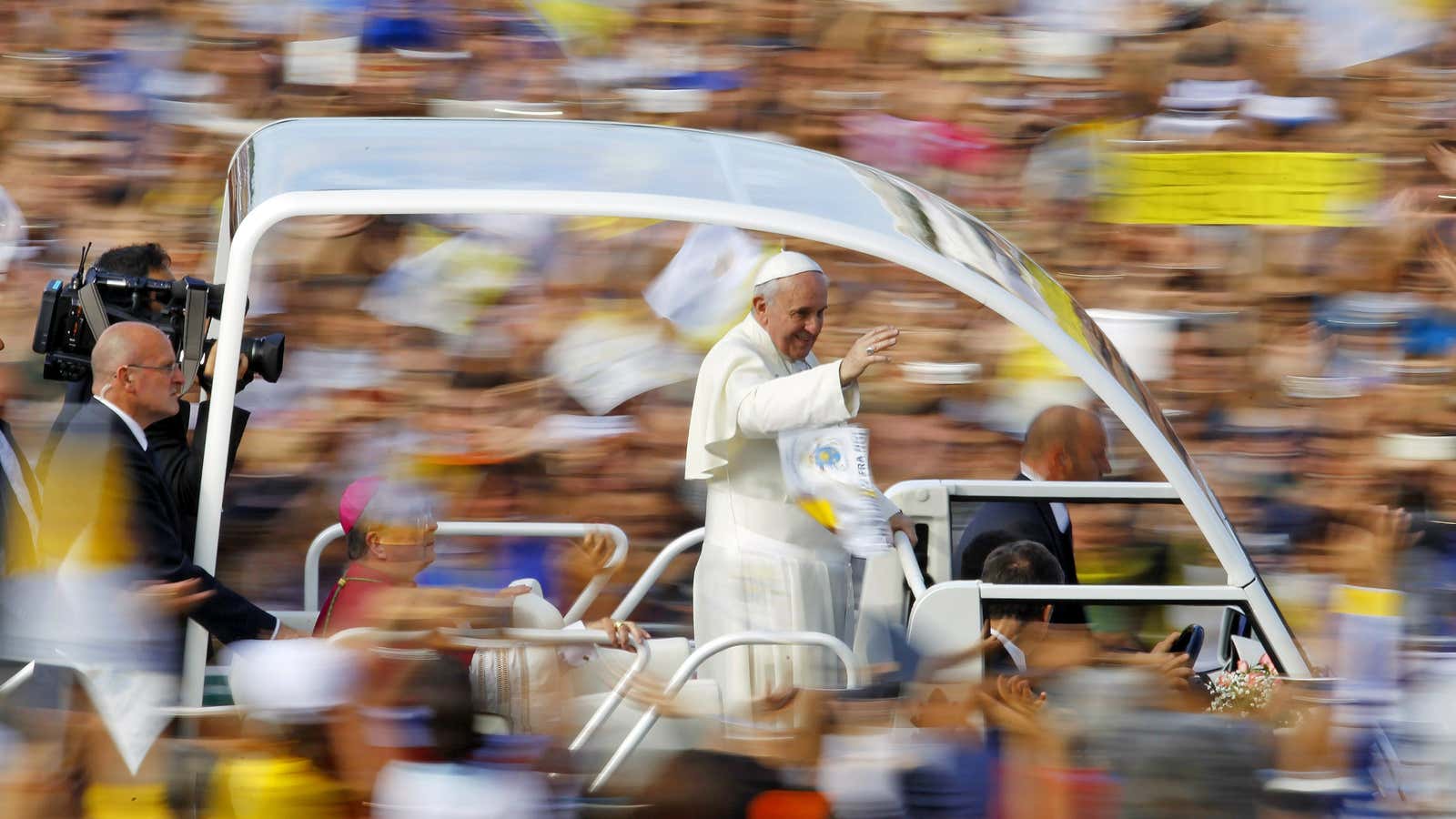Earlier this week, Pope Francis plucked two lucky 5th graders from Perugia out of a crowd in Vatican City to ride along with him in the Popemobile. This was just the latest of the Holy See’s “Dancing in the Dark” moments; earlier this year, Francis stopped the three-ton Mercedes to give an ecstatic Argentine priest from his old Archdiocese a lift through St. Peter’s Square.
The Popemobile, despite its unimaginative moniker, is a modern iteration of the sedia gestatoria, a throne of sorts upon which popes were once ferried on the shoulders of a dozen or so papal footmen. Since the introduction of the Popemobile some 80 years ago, the vehicle of the pontiff has often symbolized the intricacies of the post.
They nod to the realities of the position’s import—bulletproof glass and armor plating became standard in most of the pontiff’s transports after the 1981 assassination attempt on Pope John Paul II. The geographical reach of the Catholic world is also embodied by the global fleet of Popemobiles—regular host countries like Mexico and Chile have their own papamóvil at the ready.
Yet one could argue that Pope Francis, being Pope Francis, has not overlooked what many would consider a commonplace aspect of being the Holy See and has found a way to connect the Popemobile to his doctrines.
So far, he has changed the dynamic not only by picking up strangers, but also by eschewing some of the traditional vanity plates of the Popemobile and choosing a five-year-old Ford Focus as his go-to ride. Pope Francis has done away with the modified throne aspect of the car in some models, and even ditched his Mercedes to adopt a second-hand 30-year-old Renault with 190,000 miles on it for personal sojourns within Vatican City.
The new car was in fact a gift to Francis from a 70-year-old priest from northern Italy, Father Renzo Zocca. Zocca previously wrote the pontiff a letter saying he had used the same car for decades and wanted to give it as a symbolic gift after the pope’s comments on humility.
Other times, Pope Francis forgets the Popemobile entirely and just walks or hitches rides with others. Last month, Pope Francis opted to catch the bus with cardinals and bishops to a retreat outside of Rome, rather than take his own ride. He carried his own bags.
To the chagrin of his security detail, Pope Francis has made a more frequent habit of riding in an open air vehicle, reflecting a desire for more engagement. (Last week, he jumped off the Popemobile after his sermon to take Palm Sunday selfies with the crowd.) The pontiff rode in one such car to and from Easter celebrations earlier today in Vatican City, where he spoke to the 150,000 tourists and pilgrims.
In his address, Pope Francis made pleas for peace in places like Syria and Ukraine, but also decried the poverty that violence creates.
This post originally appeared at The Wire. More from our sister site:
What it takes to (physically) run the Boston Marathon
